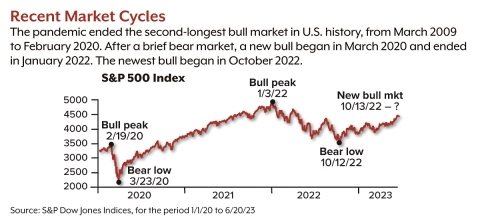It’s that time of year, folks, and I wish I were talking about spring. The federal income tax filing deadline for individuals is fast approaching—generally Monday, April 15, 2024. For taxpayers living in Maine or Massachusetts, you get a couple of extra days to procrastinate—your deadline is April 17, 2024.
The IRS has also postponed the deadline for certain disaster-area taxpayers to file federal income tax returns and make tax payments. The current list of eligible localities and other details for each disaster are always available on the IRS website’s Tax Relief in Disaster Situations page. Interest and penalties are suspended until the postponed deadline for affected taxpayers.
If I refer to the April 15 deadline in this article, you can assume I also mean any other postponed original deadline that applies to you.
Need More Time?
If you cannot file your federal income tax return by the April (or other) due date, you can file for an extension by the April 15 due date using IRS Form 4868, “Application for Automatic Extension of Time to File U.S. Individual Income Tax Return.” Most software packages can electronically file this form for you and, if necessary, remit a payment.
Filing this extension gives you until October 15, 2024, to file your federal income tax return. You don’t have to explain why you’re asking for the extension, and the IRS will contact you only if your extension is denied and explain the reason(s). There are no allowable extensions beyond October 15 unless extended by law, or you’re affected by a federally declared disaster area.
Assuming you owe a payment on April 15, you can file for an automatic extension electronically without filing Form 4868. Suppose you make an extension payment electronically via IRS Direct Pay or the Electronic Federal Tax Payment System (EFTPS) by April 15. In that case, no extension form has to be filed (see Pay What You Owe below for more information).
An extension of time to file your 2023 calendar year income tax return also extends the time to file Form 709, “Gift and generation-skipping transfer (GST) tax returns” for 2023.
Special rules apply if you’re a U.S. citizen or resident living outside the country or serving in the military outside the country on the regular due date of your federal income tax return. If so, you’re allowed two extra months to file your return and pay any amount due without requesting an extension. Interest, currently at 8% (but not penalties), will still be charged on payments made after the regular due date without regard to the extended due date.
You can pay the tax and file your return or Form 4868 for additional filing time by June 17, 2024. If you request an extension because you were out of the country, check the box on line 8 of the form.
If you file for an extension, you can file your tax return any time before the extension expires. And there’s no need to attach a copy of Form 4868 to your filed income tax return.
Tip #1: By statute, certain federal elections must be made with a timely filed return or extension and cannot be made after the original due date has passed. For example, if you’re a trader and want to elect trader tax status for the current tax year (2024), it must be made by April 15, 2024, with your timely filed return or attached to your extension. Once April 15 has passed, you are barred from making the election until the following tax year. Some elections may be permanently barred after the regular due date, so check with your tax advisor to see if you need a timely filed election with your return or extension.
Tip #2: For proof of a timely snail-mailed extension, especially for those with a relatively large payment, be sure to mail it by certified mail, return receipt requested (always request proof of delivery regardless of the method of transportation.)
Caveat: Generally, the IRS has three years from the original due date of your return to examine it and assess additional taxes (six years if fraud is suspected). If you extend your return, the three (or six) year “clock” does not start ticking until you file it, so essentially, by extending your return, you are extending the statute of limitations. But contrary to popular belief, requesting an extension does NOT increase your odds of an examination.
Pay What You Owe
One of the biggest mistakes you can make is not filing your return because you owe money. If the bottom line on your return shows that you owe tax, file and pay the amount due in full by the due date if possible. If you cannot pay what you owe, file the return (or extension) and pay as much as you can afford. You’ll owe interest and possibly penalties on the unpaid tax, but you will limit the penalties assessed by filing your return on time. You may be able to work with the IRS to pay the unpaid balance via an installment payment agreement (interest applies.)
It’s important to understand that filing for an automatic extension to file your return does not provide additional time to pay your taxes. When you file for an extension, you must estimate the amount of tax you will owe; you should pay this amount (or as much as you can) by the April 15 (or other) filing due date. If you don’t, you will owe interest, and you may owe penalties as well. If the IRS believes that your estimate of taxes was not reasonable, it may void your extension, potentially causing you to owe failure to file penalties and late payment penalties as well.
There are several alternative ways to pay your taxes besides via check. You can pay online directly from your bank account using Direct Pay or EFTPS, a digital wallet such as Click to Pay, PayPal, Venmo, or cash using a debit or credit card (additional processing fees may apply). You can also pay by phone using the EFTPS or debit or credit card. For more information, go to Make a Payment.
Tax Refunds
The IRS encourages taxpayers seeking tax refunds to file their tax returns as soon as possible. The IRS anticipates most tax refunds being issued within 21 days of the IRS receiving a tax return if 1) the return is filed electronically, 2) the tax refund is delivered via direct deposit, and 3) there are no issues with the tax return. To help minimize delays in processing, the IRS encourages people to avoid paper tax returns whenever possible.
To check on your federal income tax refund status, wait five business days after electronic filing and go to the IRS page: Where’s My Refund? Your state may provide a similar page to look up state refund status.
State and Local Income Tax Returns
Most states and localities have the same April 15 deadline and will conform with postponed federal deadlines due to federally declared disasters or legal holidays. Accordingly, most states and localities will accept your federal extension automatically (to extend your state return) without filing any state extension forms, assuming you don’t owe a balance on the regular due date. Otherwise, your state or locality may have its own extension form you can use to send in with your payment. Most states also now accept electronic payments online instead of a filed extension form with payment. Never assume that a federal extension will extend your state return; some do not. Always check to be sure.
Tip: If you want to cover all your bases, if your federal extension is lost or invalidated for any reason, you may want to file a state paper or online extension to extend the return correctly. It rarely happens, but sometimes, it is better to be safe than sorry.
IRA Contributions
Contributions to an individual retirement account (IRA) for 2023 can be made up to the April 15 due date for filing the 2023 federal income tax return (this deadline cannot be extended except by statute). However, certain disaster-area taxpayers granted relief may have additional time to contribute.
If you had earned income last year, you may be able to contribute up to $6,500 for 2023 ($7,500 for those age 50 or older by December 31, 2023) up until your tax return due date, excluding extensions. For most people, that date is Monday, April 15, 2024.
You can contribute to a traditional IRA, a Roth IRA, or both. Total contributions cannot exceed the annual limit or 100% of your taxable compensation, whichever is less. You may also be able to contribute to an IRA for your spouse for 2023, even if your spouse had no earned income.
Making a last-minute contribution to an IRA may help reduce your 2023 tax bill. In addition to the potential for tax-deductible contributions to a traditional IRA, you may also be able to claim the Saver’s Credit for contributions to a traditional or Roth IRA, depending on your income.
Even if your traditional IRA contribution is not deductible, and you are ineligible for a Roth IRA contribution (because of income limitations), the investment income generated by the contribution becomes tax-deferred, possibly for years, and the contribution builds cost basis in your IRA, making future distributions a little less taxing.
If you make a nondeductible contribution to a traditional IRA and shortly after that convert that contribution to a Roth IRA, you can get around the income limitation of making Roth contributions. This is sometimes called a backdoor Roth IRA. Remember, however, that you’ll need to aggregate all traditional IRAs and SEP/SIMPLE IRAs you own — other than IRAs you’ve inherited — when you calculate the taxable portion of your conversion. If your traditional IRA balance before the non-deductible contribution is zero, then you’ll owe no tax on the conversion, and voila! You have just made a legal Roth IRA contribution.
Making a last-minute contribution to an IRA may help reduce your 2023 tax bill. In addition to the potential for tax-deductible contributions to a traditional IRA, you may also be able to claim the Saver’s Credit for contributions to a traditional or Roth IRA, depending on your income.
If you would like to review your current investment portfolio or discuss any other retirement, tax, or financial planning matters, please don’t hesitate to contact us at 734-447-5305 or visit our website at http://www.ydfs.com. We are a fee-only fiduciary financial planning firm that always puts your interests first. If you are not a client, an initial consultation is complimentary, and there is never any pressure or hidden sales pitch. We start with a specific assessment of your personal situation. There is no rush and no cookie-cutter approach. Each client is different, and so are your financial plan and investment objectives.


